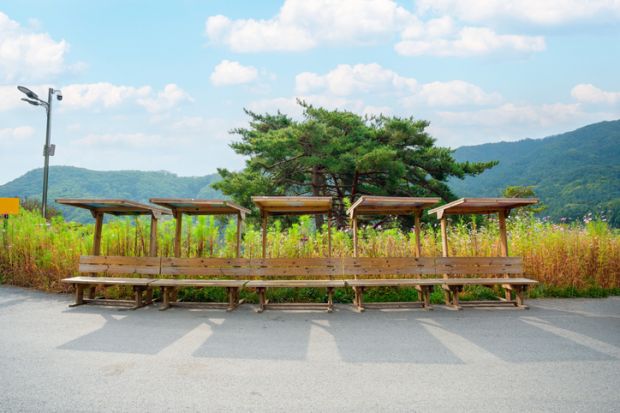The looming closure of dozens of insolvent universities in South Korea will change the distribution of students across the country, potentially furthering inequalities between its regions and capital city, scholars say.
Korea’s rapid demographic decline has already resulted in university closures across the country – and it is expected to get far worse.
This year, the Ministry of Education identified 84 financially insolvent institutions that need to close. According to recent figures compiled by the Korean Council for University Education (KCUE), the representative association of four-year universities, in 2040, there will be approximately 280,000 students eligible to enter university – 39 per cent down from 460,000 in 2020.
Academics taking part in a recent KCUE forum said that a possible solution could be for the government to pay institutions to close voluntarily.
Currently, universities are required by law to shut if a government audit finds they don’t serve enough students to justify their existence. Many hold on as long as possible, becoming “zombie universities”, with leaders keen to avoid giving up their remaining assets to the local or federal government upon closure, as is required by law.
Jun Yoo, a professor in the department of Korean language and literature at Yonsei University, said that, unless the government incentivises struggling universities to close before they face insolvency, it will have no choice but to maintain its strict, numbers-based system for shuttering the institutions.
“The government could pay them a certain amount of money to shut down. Otherwise, the only way is going down the draconian…quota route, but it will then create major inequalities as Seoul schools will see a surge of students, and the countryside could become ghost towns,” he said.
Professor Yoo worried that the closures could too easily fall along narrow geographic lines, with the bureaucrats in charge of determining universities’ fates more likely to keep the ones in the nation’s capital open.
Stuart Gietel-Basten, professor of social science and public policy at Khalifa University of Science and Technology and an expert in Asian demography, agreed that the moves would cause a redistribution of students across the country.
“It is pretty inevitable that we [will] see the rise and fall of the sector,” he said, noting that “place” would be a large factor in which universities remain standing.
Federally and regionally funded institutions would generally fare better than their non-subsidised counterparts, he predicted.
“There will be a big difference between the private and public ones,” he said, adding: “The market will dictate how long the struggling private ones will last.”
While most scholars Times Higher Education approached were reluctant to say that struggling institutions should throw in the towel early, Philip Altbach, research professor and distinguished fellow at the Center for International Higher Education, Boston College, said it seemed like the best course of action in a difficult situation.
“‘Assisted suicide’ might well be the best solution for surplus private universities – and authorities need to provide realistic plans,” he said.
How Korea handles the oversupply of universities could be instructive for other sectors, Professor Altbach added, because other countries with falling populations and a large number of student seats will also need to devise a plan for closing universities. “Korea is of course not alone in facing these problems,” he said.
Register to continue
Why register?
- Registration is free and only takes a moment
- Once registered, you can read 3 articles a month
- Sign up for our newsletter
Subscribe
Or subscribe for unlimited access to:
- Unlimited access to news, views, insights & reviews
- Digital editions
- Digital access to THE’s university and college rankings analysis
Already registered or a current subscriber? Login








